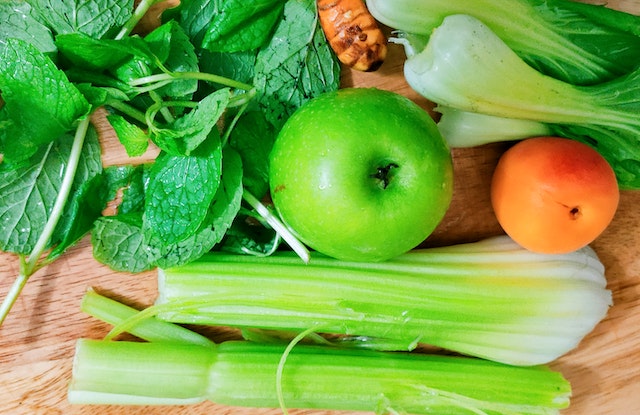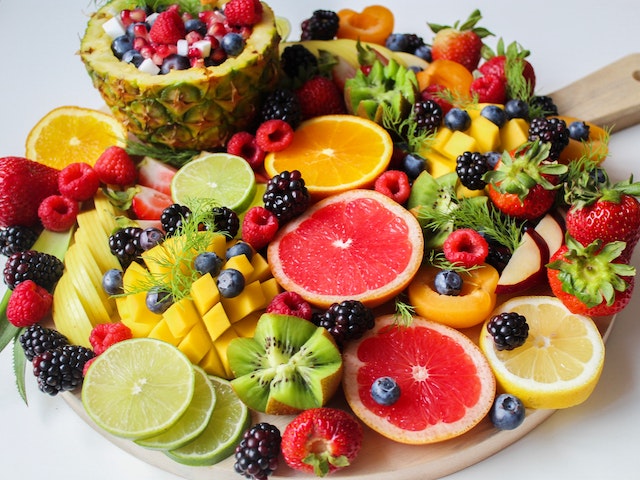Are you looking to create a beautiful garden while also helping our planet’s pollinators thrive? There are simple steps you can take to attract bees, butterflies, and other important pollinators to your backyard. Not only will these creatures add beauty and life to your outdoor space, but they will also play a vital role in the ecosystem. So grab your gardening gloves, because we’ve got 10 easy tips for creating a pollinator-friendly garden that will have everyone buzzing with excitement!
What are pollinators?
Pollinators are animals that play a crucial role in the reproduction of flowering plants. They transport pollen from the male part of one flower to the female part of another flower, which allows fertilization and ultimately leads to fruit production.
The most common pollinators include bees, butterflies, moths, flies, beetles, hummingbirds and bats. Some species of ants and wasps also act as pollinators.
Pollination is essential for agriculture because it ensures crop yields and food security. Without pollinators, many fruits like apples or strawberries would become scarce or disappear altogether.
It’s important to remember that not all flowers require pollination by insects; some rely on wind or even water instead. However, many garden plants depend heavily on insect pollination for their survival.
These tiny creatures do a lot more than just buzzing around our gardens – they sustain life as we know it!
Why are pollinators important?
Pollinators are essential for the survival of many plant species, including those that produce our food. They facilitate the transfer of pollen from the male parts of a flower to the female parts, allowing fertilization and subsequent production of seeds and fruits.
Without pollinators such as bees, butterflies, moths, hummingbirds, and bats, our food supply would be severely impacted. It is estimated that one-third of all crops grown globally depend on pollinators for successful yields.
Pollinators also play a crucial role in maintaining biodiversity by helping plants reproduce and ensuring genetic diversity within populations. This benefits not only wildlife but also humans who rely on healthy ecosystems for clean air and water.
In addition to their ecological importance, pollinators have cultural significance too. People have been admiring butterflies and bees since ancient times due to their beauty and gracefulness. Pollinator-related activities like beekeeping bring pleasure to many people worldwide.
Conserving pollinators is vital for both environmental sustainability as well as human wellbeing. By taking steps towards creating a friendly habitat for these creatures in your garden or community spaces you can help ensure their continued existence while also enjoying their unique beauty!
What can you do to attract pollinators to your garden?
Creating a pollinator-friendly garden is not as difficult as it may sound. There are several simple steps you can take to attract these essential creatures to your yard and help them thrive.
Firstly, choose plants that provide pollen and nectar for pollinators. Native flowers are the best choice because they have evolved with local pollinators and provide food that matches their needs. Consider planting a variety of flowers that bloom at different times throughout the growing season.
Secondly, avoid using pesticides in your garden. Insecticides can be harmful to bees, butterflies, and other beneficial insects. Instead, practice integrated pest management by encouraging natural predators like birds or ladybugs.
Thirdly, provide nesting sites for solitary bees by leaving dead wood or installing bee houses in your garden. These types of bees do not live in hives but nest alone in small cavities like hollow twigs or stems.
Fourthly, include water sources such as bird baths or shallow dishes filled with rocks where pollinators can rest and drink safely without drowning.
Consider reducing your lawn area by adding more flowering plants instead which will create a healthy habitat for all kinds of wildlife including pollinators!
The best flowers for attracting pollinators
When it comes to creating a pollinator-friendly garden, choosing the right flowers is crucial. Here are some of the best flower options for attracting these important creatures:
1. Coneflowers: These colorful and hardy perennials bloom from summer through fall, providing nectar for bees and butterflies.
2. Milkweed: As the primary food source for monarch butterfly caterpillars, milkweed is an essential addition to any pollinator garden.
3. Bee balm: Also known as Monarda, bee balm produces fragrant blooms that attract hummingbirds and bees alike.
4. Liatris: This tall spiky plant produces purple or white blooms that are irresistible to both butterflies and bees.
5. Salvias: With their vibrant colors and long blooming season, salvias offer a feast for many species of pollinators.
6. Sunflowers: Not only do sunflowers provide a stunning visual display in your garden, but they also produce ample amounts of nectar beloved by bees and other insects.
By including these flowers in your garden design, you’ll be sure to create an inviting habitat for pollinators all season long!
The best shrubs and trees for attracting pollinators
Trees and shrubs can provide a valuable source of food and habitat for pollinators throughout the year. When considering what to plant, it’s important to choose varieties that bloom at different times so that there is always something available for pollinators.
One great option is the serviceberry tree, which produces small white flowers in early spring before many other trees have bloomed. It also produces berries later in the season that are loved by birds and other wildlife.
Another good choice is the butterfly bush, which gets its name from its ability to attract butterflies with its long spikes of colorful flowers. Be sure to choose a sterile variety as some types can become invasive.
Lilacs are another popular choice for their sweet scent and showy blooms in late spring. They come in a variety of colors ranging from white to deep purple.
For those looking for an evergreen option, consider planting some yew shrubs. Their soft needles make excellent nesting material for bees while their bright red berries provide winter food for birds.
Incorporating trees and shrubs into your garden design can benefit both pollinators and yourself with their beauty and functionality as part of your landscape.
Creating a habitat for pollinators
Creating a habitat for pollinators is an essential part of attracting and supporting these important creatures in your garden. The first step is to provide them with a safe and comfortable place to call home. This can be achieved by incorporating nesting boxes, bee hotels, or even creating small piles of leaves or twigs.
Another important factor when creating a habitat for pollinators is providing them with shelter from the elements. This can be done by planting shrubs or trees that offer shade and protection from wind and rain.
It’s also crucial to create diversity within your garden by planting different types of flowers, shrubs, and trees that bloom at different times of the year. This will ensure that there is always a food source available for pollinators throughout the growing season.
In addition to providing food sources and shelter, it’s important to avoid using chemical pesticides in your garden as they are harmful to both pollinators and other beneficial insects. Instead, opt for natural pest control methods such as companion planting or handpicking pests off plants.
Creating a habitat for pollinators requires careful consideration of their needs while also taking steps towards sustainable gardening practices that benefit both wildlife and our environment.
Pesticides and pollinators
Pesticides can be harmful to pollinators and their habitats. In fact, some pesticides may even kill pollinators outright or adversely affect their behavior. This is because many pesticides are designed to target insects and other pests that can harm plants, but they do not discriminate between those pests and beneficial insects like bees, butterflies and other pollinators.
When using pesticides in your garden, it’s important to choose products that have been specifically formulated with the safety of pollinators in mind. Look for products labeled “bee-friendly” or “safe for pollinators.” You should also avoid spraying during times when bees are most active, such as early morning or late afternoon.
Another way to minimize the impact of pesticides on pollinators is by reducing their use altogether. Consider alternatives to traditional pesticide treatments like handpicking pests off plants, introducing natural predators or using organic pest management techniques.
If you must use a pesticide product in your garden that could potentially harm pollinators, take extra care to apply it only where needed and follow all label instructions carefully. By taking these steps you can help protect our valuable pollinator populations while still maintaining a healthy garden environment.
What else can you do to help pollinators?
Apart from planting pollinator-friendly flowers, shrubs and trees, there are other ways you can help pollinators thrive in your garden.
One of the simplest things you can do is to provide a source of water for them. A shallow dish or birdbath filled with clean water will attract not only butterflies and bees but also birds that feed on insects.
Another way to support pollinators is by providing nesting sites. You can create simple nesting structures using materials like bamboo or wood that have holes drilled into them. These structures provide solitary bees with a safe place to lay their eggs.
Reducing pesticide use in your garden is another important step towards supporting pollinators. Choose natural alternatives and avoid using pesticides during bloom time when pollinators are most active.
Spreading awareness about the importance of pollinator conservation among your friends and family can make a big impact too. Encourage others to plant more native plants in their gardens and avoid using harmful chemicals on their lawns.
By taking these simple steps, we can all play our part in creating a better environment for our precious pollinators.
Conclusion
Creating a pollinator-friendly garden is not only beneficial for the environment but also adds beauty and vibrancy to your outdoor space. By providing a habitat for bees, butterflies, and other pollinators, you are helping to ensure their survival while also supporting the growth of fruits and vegetables in your own garden.
Remember that attracting pollinators involves more than just planting flowers; it requires creating a diverse ecosystem with food sources throughout the year, protecting against pesticides and providing shelter. By following these simple tips, you can create an inviting environment for our hardworking pollinators to thrive in.
So let’s all do our part in preserving nature by embracing sustainable gardening practices. Whether you have acres of land or just a small balcony garden, every little bit counts when it comes to supporting our precious pollinators!









